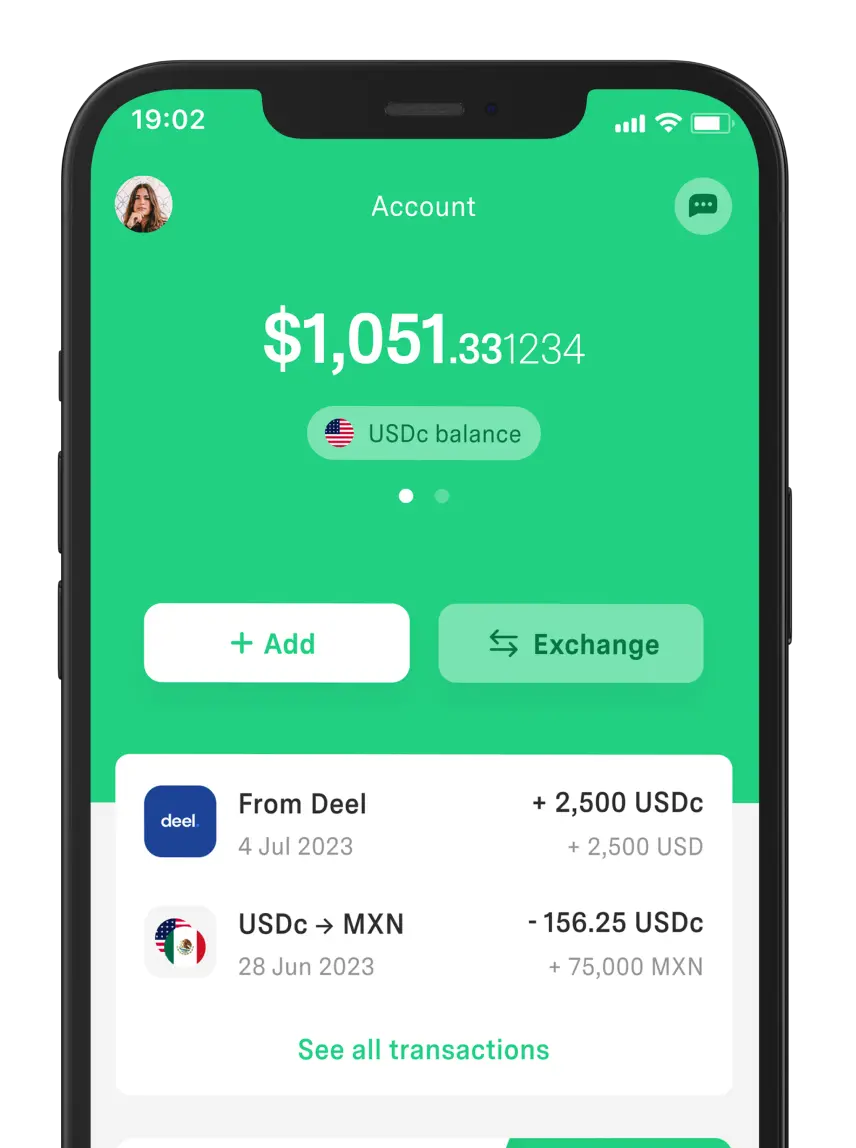 Your Money
Your Money How to Cancel a Bank Transfer
Discover how to cancel a bank transfer. If it hasn’t been processed yet, you might have a chance to reverse the transaction.



The exchange rate is one of those concepts people often overlook—until they travel abroad or receive money from another country.
It’s not just about numbers—regular fluctuations can make you pay more than expected or get less for your money. That’s why in the following paragraphs we’ll explain what the exchange rate is and everything you need to know about it.
It’s a rate that tells you how many units of one currency you need to get one of another.
For example, if you go to XE.com, it will show that 1 U.S. dollar equals 19.71 Mexican pesos, as of today. This means you need 19.71 pesos to buy 1 dollar.
However, these values don’t stay the same—they can change at any moment due to several factors. Such as government policies or the platform you use to buy dollars in Mexico.
It works like a price set between two currencies, such as the U.S. currency (USD) and the Mexican peso (MXN).
As mentioned, it can go up or down based on certain circumstances. So, if you’re wondering how the exchange rate is determined, the answer is: it depends on a mix of factors.
The most important include:
Decisions by central banks (like Banxico)
The country’s economic and political stability
The supply and demand of the currency
The system a country uses also plays a role—some are controlled by the government, others by market forces.
Exchange rates play a key role in any country’s economy. Besides determining the value of one currency versus another, they also affect commercial, financial, and tourism-related decisions—both domestically and globally.
Let’s explain:
Exchange rates are crucial for import costs and the competitiveness of exports. If the local currency strengthens, importing becomes cheaper—but it can make exports more expensive.
Conversely, if it weakens, exporters benefit by making their products more attractive in international markets. Though yes, it also makes imports more costly.
The same happens in tourism.
Let’s say the exchange rate favors a Latin American currency against the dollar. Then, you’ll have more purchasing power when traveling abroad.
If it’s the other way around, the country becomes more attractive to international visitors, who get more value for their money.
An economy with a stable exchange rate tends to inspire more confidence among investors. This can result in more capital inflow and economic growth.
In short, exchange rates are important because they reflect a country’s position in the global economy. They are key to growth, competitiveness, and the ability to attract investment and tourism.
Once you understand what the exchange rate is and what it’s for, you realize it impacts many everyday decisions. Often, you don’t even notice it.
Still, its effects are most visible in international operations—such as traveling, sending/receiving remittances, or shopping on foreign websites.
Remember, the exchange rate determines how much you’ll really get for your money.
Even a small variation can make a difference, for example:
If the peso weakens against the dollar, everything priced in dollars becomes more expensive for you. That includes flights, hotels, or digital subscriptions. Of course, if the exchange rate improves, your money will go further.
When the exchange rate moves against your local currency, that phone, laptop, or online purchase may cost more—especially if you buy from websites listing prices in dollars, like Amazon U.S.
Exchange rate variations also affect profits, since values shift when converting currencies. Even small fluctuations can mean big differences in large amounts or frequent transactions.
Yes, when we talk about exchange rates, there’s no single one. But there are two common ways they’re set:
1. Fixed Exchange Rate. The currency value stays stable because it’s directly controlled by the government (like in countries that peg it to the dollar).
2. Floating Exchange Rate. Its value adjusts based on market conditions like inflation, monetary policy, or foreign trade.
You may also come across:
This is the international reference value. It’s not the one you’ll see at banks when exchanging pesos for dollars, but it serves as a general reference. It fluctuates based on the supply and demand of each currency.
When exchanging money, you’ll see two different values:
1. Buy: what you’ll get in pesos for every dollar, euro, or other currency.
2. Sell: what you’ll pay for each unit of that currency (USD, EUR, etc.).
There’s always a gap between them—this is part of the profit for the bank or exchange house.
Set by banks, digital platforms, or exchange houses. These are custom rates established by each business or institution—often with an added margin for profit.
The most common way to show the relationship between two currencies—the one you usually see on sites like XE.com. It doesn’t account for cost of living or local prices.
For example, if you use xe.com’s converter, you’ll see 1 USD = 19.71 MXN and below 1 MXN = 0.05 USD, like in this image:

In mathematical terms, both are equivalent—but the nominal exchange rate is just 1 USD = 19.71 MXN.
Exchange rates can vary depending on the source and the type of transaction. So here are the values different providers offer as of today:
Provider | Exchange Type | Current Rate |
Interbank (market) | 1 USD = 19.69 MXN | |
Xe.com | Interbank (market) | 1 USD = 19.71 MXN |
Banorte Bank | Proprietary | Buy: $18.50 MXN / Sell: $20.00 MXN |
BBVA México | Proprietary | Buy: $18.83 MXN / Sell: $19.97 MXN |
Banco Azteca | Proprietary | Buy: $18.80 MXN / Sell: $20.15 MXN |
DolarApp | Proprietary | Buy: $19.71 MXN / Sell: $19.70 MXN |
Rates as of May 5, 2025.
Need to receive money outside of Mexico, Argentina, Colombia, or Brazil? Use DolarApp on your mobile device without losing value in the exchange rate.
We operate with digital dollars so you can send/receive payments from abroad—and we charge only 3 USDc in fees.
You can also buy or sell USDc directly from the app at a competitive, transparent exchange rate, with no fees.
Want to manage your finances better and make the most of your money?
DolarApp is an affordable alternative with a simple, transparent interface—give it a try!


The world has borders. Your finances don’t have to.
 Your Money
Your Money Discover how to cancel a bank transfer. If it hasn’t been processed yet, you might have a chance to reverse the transaction.

 Your Money
Your Money Have you ever wondered how long it takes for a bank transfer to show up? Find out the timeframes associated with transfers in Mexico here.

 Your Money
Your Money Your personal finances summarize your relationship with money. Discover why they matter and what to do to start managing them well.


